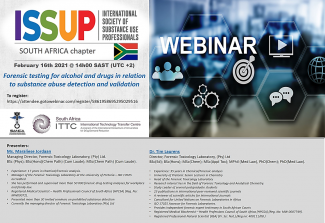Forensic testing for alcohol and drugs in relation to substance abuse detection and validation
Webinar on February 16th, 2pm SAST: Forensic testing for alcohol and drugs in relation to substance abuse detection and validation. Substance abuse detection is of prime importance in modern-day life due to the ever-increasing demands and pressure on society.



